2,3-Naphthalenedicarbaldehyde

2,3-Naphthalenedicarbaldehyde structure
|
Common Name | 2,3-Naphthalenedicarbaldehyde | ||
|---|---|---|---|---|
| CAS Number | 7149-49-7 | Molecular Weight | 184.19 | |
| Density | 1.3±0.1 g/cm3 | Boiling Point | 380.0±25.0 °C at 760 mmHg | |
| Molecular Formula | C12H8O2 | Melting Point | 131-133ºC(lit.) | |
| MSDS | Chinese USA | Flash Point | 142.5±20.2 °C | |
| Symbol |

GHS07 |
Signal Word | Warning | |
| Name | 2,3-Naphthalenedialdehyde |
|---|---|
| Synonym | More Synonyms |
| Description | Naphthalene-2,3-Dicarboxaldehyde (2,3-Naphthalenedicarboxaldehyde), a phthaldehyde derivative, is a fungal ASADH inhibitor (Ki: 45 渭M). Naphthalene-2,3-Dicarboxaldehyde inhibits the growth of C. albicans CAF2-1 with IC50 of 58.2 渭M and MIC of 12 渭g/mL[1]. |
|---|---|
| Related Catalog | |
| References |
| Density | 1.3±0.1 g/cm3 |
|---|---|
| Boiling Point | 380.0±25.0 °C at 760 mmHg |
| Melting Point | 131-133ºC(lit.) |
| Molecular Formula | C12H8O2 |
| Molecular Weight | 184.19 |
| Flash Point | 142.5±20.2 °C |
| Exact Mass | 184.052429 |
| PSA | 34.14000 |
| LogP | 1.74 |
| Vapour Pressure | 0.0±0.9 mmHg at 25°C |
| Index of Refraction | 1.713 |
| Storage condition | 2-8°C |
| Symbol |

GHS07 |
|---|---|
| Signal Word | Warning |
| Hazard Statements | H315-H319-H335 |
| Precautionary Statements | P261-P305 + P351 + P338 |
| Personal Protective Equipment | dust mask type N95 (US);Eyeshields;Gloves |
| Hazard Codes | Xi |
| Risk Phrases | 36/37/38 |
| Safety Phrases | 26 |
| RIDADR | NONH for all modes of transport |
| WGK Germany | 3 |
| HS Code | 2912299000 |
| Precursor 10 | |
|---|---|
| DownStream 10 | |
| HS Code | 2912299000 |
|---|---|
| Summary | 2912299000. other cyclic aldehydes without other oxygen function. VAT:17.0%. Tax rebate rate:13.0%. . MFN tariff:5.5%. General tariff:30.0% |
|
Superparamagnetic iron oxide nanoparticles exacerbate the risks of reactive oxygen species-mediated external stresses.
Arch. Toxicol. 89(3) , 357-69, (2015) Superparamagnetic iron oxide nanoparticles (IONPs) have been widely applied in numerous biomedical fields. The evaluation of the toxicity of IONPs to the environment and human beings is indispensable ... |
|
|
Correlation of 3-mercaptopropionic acid induced seizures and changes in striatal neurotransmitters monitored by microdialysis.
Eur. J. Pharm. Sci. 57 , 25-33, (2014) The goal of this study was to use a status epilepticus steady-state chemical model in rats using the convulsant, 3-mercaptopropionic acid (3-MPA), and to compare the changes in striatal neurotransmiss... |
|
|
Hemizygosity of transsulfuration genes confers increased vulnerability against acetaminophen-induced hepatotoxicity in mice.
Toxicol. Appl. Pharmacol. 282(2) , 195-206, (2015) The key mechanism for acetaminophen hepatotoxicity is cytochrome P450 (CYP)-dependent formation of N-acetyl-p-benzoquinone imine, a potent electrophile that forms protein adducts. Previous studies rev... |
| 2,3-Naphthalenedicarbaldehyde |
| Naphthalene-2,3-dicarbaldehyde |
| MFCD00016618 |
| 2,3-Naphthalenedicarboxaldehyde |
| NAPHTHALENE-2,3-DICARBOXALDEHYDE |
 CAS#:31554-15-1
CAS#:31554-15-1 CAS#:38998-33-3
CAS#:38998-33-3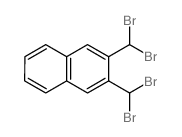 CAS#:71383-01-2
CAS#:71383-01-2 CAS#:2169-87-1
CAS#:2169-87-1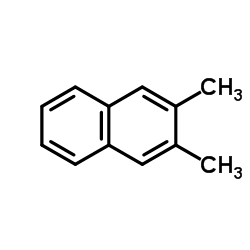 CAS#:581-40-8
CAS#:581-40-8![cyclobuta[b]naphthalene-1,2-dione Structure](https://image.chemsrc.com/caspic/475/41634-34-8.png) CAS#:41634-34-8
CAS#:41634-34-8 CAS#:13209-15-9
CAS#:13209-15-9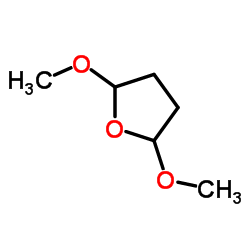 CAS#:696-59-3
CAS#:696-59-3 CAS#:643-79-8
CAS#:643-79-8 CAS#:875842-96-9
CAS#:875842-96-9![12H-Benz[5,6]isoindolo[2,1-a]benzimidazole structure](https://image.chemsrc.com/caspic/189/10561-93-0.png) CAS#:10561-93-0
CAS#:10561-93-0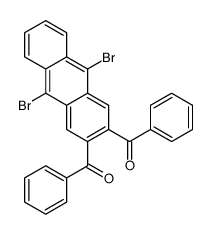 CAS#:141765-69-7
CAS#:141765-69-7 CAS#:106-44-5
CAS#:106-44-5 CAS#:63-68-3
CAS#:63-68-3![2-(1-cyano-2H-benzo[f]isoindol-2-yl)ethanesulfonic acid structure](https://image.chemsrc.com/caspic/158/110926-99-3.png) CAS#:110926-99-3
CAS#:110926-99-3![2-(2-(dimethylamino)ethyl)-2H-benzo[f]isoindole-1-carbonitrile structure](https://image.chemsrc.com/caspic/298/1224197-77-6.png) CAS#:1224197-77-6
CAS#:1224197-77-6![benzo[g]phthalazine structure](https://image.chemsrc.com/caspic/467/260-35-5.png) CAS#:260-35-5
CAS#:260-35-5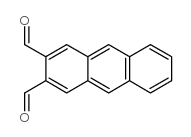 CAS#:76197-35-8
CAS#:76197-35-8
